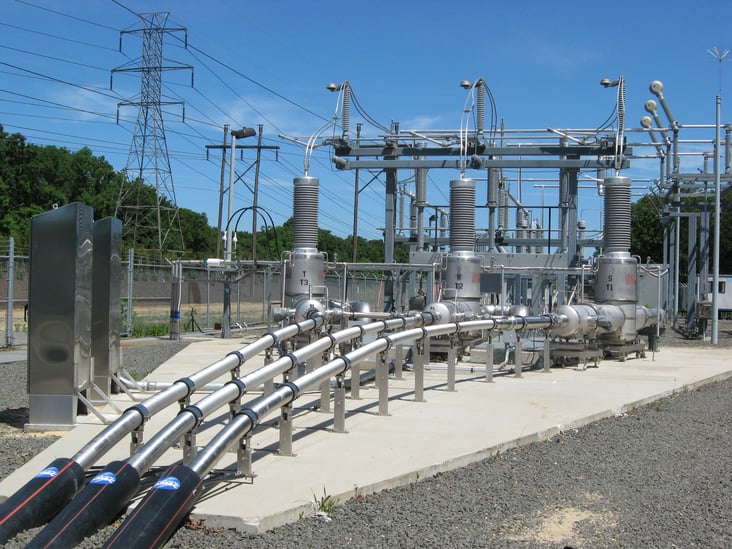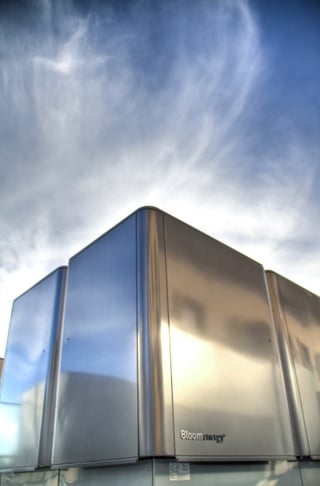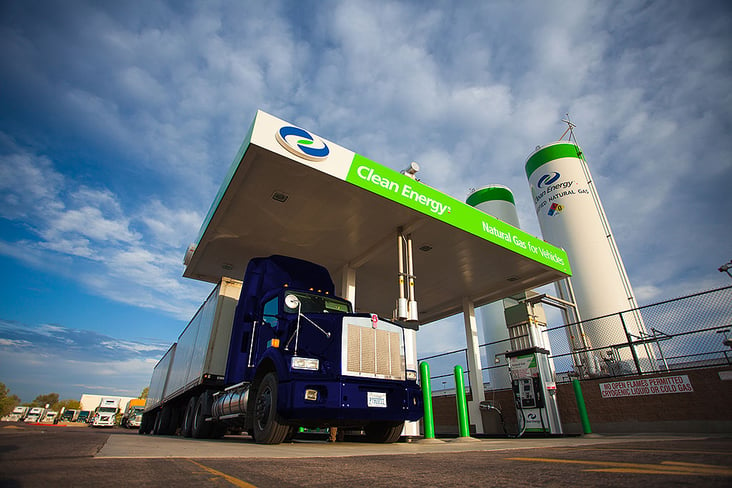This post is one in a series featuring the complete slate of advanced energy technologies outlined in the report This Is Advanced Energy.

Above, Long Island Power Authority (LIPA) is utilizing a cable system manufactured by Nexans that utilizes AMSC’s HTS wire and an Air Liquide cooling system. Energized in April of 2008, this is the world’s first superconductor transmission-voltage cable system and is capable of transmitting up to 574 megawatts (MW) of electricity and powering 300,000 homes.
Superconductivity is a property of certain materials whereby electrical resistance, which normally decreases gradually with decreasing temperature, suddenly drops to zero at a critical temperature, allowing greater current to flow and eliminating resistive losses. Advances in material science have created high-temperature superconductors (HTS), with relatively “warm” critical temperatures of -315°F to -230°F that allow for the use of less expensive and easier to handle coolants such as liquid nitrogen. HTS systems transmit electricity through a superconducting cable that is insulated with liquid nitrogen pumped by refrigeration equipment. This allows HTS cables to carry 10 times the power of a standard cable of similar thickness with almost no losses. These lines can connect directly to the existing AC transmission system to add highly efficient transmission capacity that can relieve congestion without the need for high voltages.
Read More
Topics:
This Is Advanced Energy

This post is one in a series featuring the complete slate of advanced energy technologies outlined in the report This Is Advanced Energy.
A fuel cell generates electricity via an electrochemical reaction, converting the chemical energy in fuel directly into electricity without combustion. Much like a battery, a fuel cell consists of three parts: an electrolyte, an anode, and a cathode. Unlike a battery, in a fuel cell hydrogen and oxygen react across the electrolyte to produce a continuous supply of electricity. Most fuel cells utilize natural gas or hydrogen as fuel, but landfill gas, and biogas from anaerobic digestion can also be used; for transportation or portable applications, methanol, ethanol, and even gasoline and diesel can be used. Fuel cell power plants are considered a form of distributed generation because they are small compared to traditional central generating stations, ranging from a few kilowatts for residential applications to tens of MW for larger industrial or grid-sited applications. With net electrical efficiencies of 60% or higher, fuel cells are more efficient than comparably sized onsite diesel or natural gas internal combustion engines.
Read More
Topics:
This Is Advanced Energy
This post is one in a series featuring the complete slate of advanced energy technologies outlined in the report This Is Advanced Energy.

Photo courtesy of Clean Energy Fuels.
Compressed Natural Gas (CNG) and Liquefied Natural Gas (LNG) are gaining market share as transportation fuels. The technologies for producing, storing and using both CNG and LNG are well developed. With CNG, pipeline natural gas is compressed to 3,000 to 4,000 pounds per square inch (psi) and stored in a pressurized tank on board the vehicle. CNG fueling stations include all the equipment necessary to take natural gas from the local distribution system, compress it, and refuel the vehicles. With LNG, the natural gas must be cooled to about -260°F at which point the methane (the main constituent of natural gas) turns to a liquid. The LNG is stored in insulated cryogenic tanks at the refueling station and on board the vehicle.
Read More
Topics:
This Is Advanced Energy
This post is one in a series featuring the complete slate of advanced energy technologies outlined in the report This Is Advanced Energy.

As the dominant technology for passenger vehicles for over 100 years, gasoline-powered internal combustion engine (ICE) vehicles continue to improve their fuel efficiency and performance in dramatic ways. In addition to general improvements to reduce vehicle weight and improve drivetrain efficiency, several engine innovations are at various stages of development and commercial deployment. Three of these innovations are covered here: low-temperature combustion (LTC), lean burn gasoline combustion, and direct fuel injection.
Read More
Topics:
This Is Advanced Energy
This post is one in a series featuring the complete slate of advanced energy technologies outlined in the report This Is Advanced Energy.
 Nuclear power plants in operation today rely on nuclear fission (the splitting of heavy atomic nuclei) to produce electricity. Fission releases heat in the plant’s reactor core. This heat is used to generate steam, which then spins a steam turbine attached to an electric generator. Nuclear power plants are large facilities with individual reactors typically sized in the 1 GW range. The three-unit, 4 GW Palo Verde Nuclear Generating Station in Arizona is the country’s largest, generating enough power to meet the needs of 4 million homes and supplying electricity to customers of seven utilities across three states. Nuclear power is typically used for baseload generation, as the technology is not easy to start and stop or cycle up and down. Currently, the Pressurized Water Reactor (PWR) and the Boiling Water Reactor (BWR) are the only two types of reactors in operation in the United States. Newer technologies (known as “Generation III” or “III+”) offer greater reliability and enhanced safety features, as well as higher efficiency.
Nuclear power plants in operation today rely on nuclear fission (the splitting of heavy atomic nuclei) to produce electricity. Fission releases heat in the plant’s reactor core. This heat is used to generate steam, which then spins a steam turbine attached to an electric generator. Nuclear power plants are large facilities with individual reactors typically sized in the 1 GW range. The three-unit, 4 GW Palo Verde Nuclear Generating Station in Arizona is the country’s largest, generating enough power to meet the needs of 4 million homes and supplying electricity to customers of seven utilities across three states. Nuclear power is typically used for baseload generation, as the technology is not easy to start and stop or cycle up and down. Currently, the Pressurized Water Reactor (PWR) and the Boiling Water Reactor (BWR) are the only two types of reactors in operation in the United States. Newer technologies (known as “Generation III” or “III+”) offer greater reliability and enhanced safety features, as well as higher efficiency.
Read More
Topics:
This Is Advanced Energy




